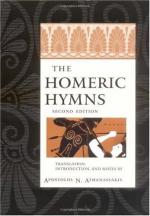{24} Hartland, “Folk-Lore,” ix. 4, 312; x. I, p. 51.
{30} Winslow, 1622.
{34} For authorities, see Mr Howitt in the Journal of the Anthropological Institute, and my “Making of Religion.” Also Folk Lore, December-March, 1898-99.
{37a} Manning, “Notes on the Aborigines of New Holland.” Read before Royal Society of New South Wales, 1882. Notes taken down in 1845. Compare Mrs. Langloh Parker, More Australian Legendary Tales, “The Legend of the Flowers.”
{37b} Spencer and Gillen, “Natives of Central Australia,” p. 651, s.v.
{39} For the use of Hermes’s tortoise-shell as a musical instrument without strings, in early Anahuac, see Prof. Morse, in Appleton’s Popular Science Monthly, March 1899.
{41} Gemoll.
{44} “Golden Bough,” i. 279. Mannhardt, Antike-Wald-und Feldkulte, p. 274.
{45} Howitt, Journal Anthtop. Inst., xvi. p. 54.
{46a} The Kurnai hold this belief.
{46b} Brough Smyth, vol. i. p. 426
{46c} Journal Anthrop. Inst., xvi. pp. 330-331.
{59} The most minute study of Lobeck’s Aglaophamus can tell us no more than this; the curious may consult a useful short manual, Eleusis, Ses Mysteres, Ses Ruines, et son Musee, by M. Demetrios Philios. Athens, 1896. M. Philios is the Director of the Eleusinian Excavations.
{61} “Golden Bough,” ii. 292.
{62} “Golden Bough,” ii. 369.
{64a} “Golden Bough,” ii. 44.
{64b} Ibid., 46.
{65} Mrs. Langloh Parker, “More Australian Legends,” pp. 93-99.
{66} The anthropomorphic view of the Genius of the grain as a woman existed in Peru, as I have remarked in “Myth, Ritual, and Religion,” i. 213. See, too, “Golden Bough,” i. p. 351; Mr. Frazer also notes the Corn Mother of Germany, and the Harvest Maiden of Balquhidder.
{67} “Golden Bough,” p. 351, citing from Mannhardt a Spanish tract of 1649.
{68} Howitt, on Mysteries of the Coast Murring (Journal Anthrop. Instit., vol. xiv.).
{69} De Smet, “Oregon Mission,” p. 359. Tanner’s “Narrative” (1830), pp. 192-193.
{72} Pater, “Greek Studies,” p. 90.
{74a} “Africana,” i. 130.
{74b} Journal Anthrop. Instit. (1884), xiii. pp. 444, 450.
{74c} Op. cit., xiv. pp. 310, 316.
{75} “New South Wales,” by Barren Field, pp. 69, 122 (1825).
{76a} Aristophanes, Ranae, 445 et seq.; Origen. c. Cels., iii. 59; Andocides, Myst., 31; Euripides, Bacch, 72 et seq. See Wobbermin, Religionsgeschitliche Studien, pp. 36-44.
{76b} Wobbermin, op. cit., p. 38.
{77} Wobbermin, op. cit., p. 34.
{78} Hatch, “Hibbert Lectures,” pp. 284, 285.




